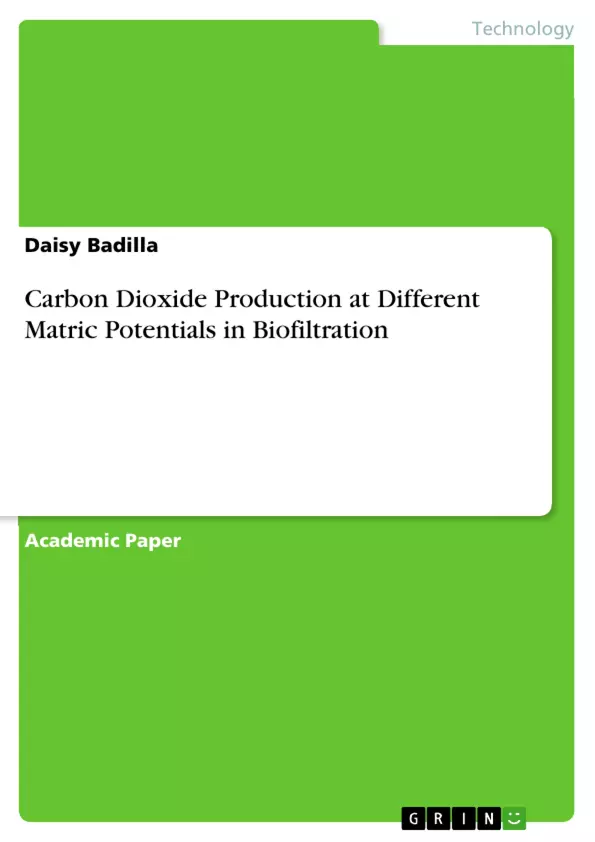The objective of this study is to investigate PCO2 at different matric potentials/water contents as a way of verifying biofiltration performance.
Production of carbon dioxide (PCO2) is often used to measure the extent of biodegradation in biofiltration. PCO2 is a useful measure of performance where a high value of carbon recovery confirms effective biodegradation. A biofilter reactor with water content control through changes in matric potential was used in this study using soil as the filter bed medium. The value of this work is in the study of the biofiltration performance in high matric potential/water content which might not have been possible in previous studies due to the difficulty or even unavailability of rigorous control of matric potential/water content in the experimental set-up.
Results of this study imply CO2 production is not a good measure of the extent of biodegradation during wetting (an increase of matric potential) of the filter bed medium and thus, caution in its use as an indicator of the degree of mineralization or biodegradation is to be observed.
Inhaltsverzeichnis (Table of Contents)
- INTRODUCTION
- MATERIALS AND METHODS
- Bioreactor head space
- RESULTS AND DISCUSSION
- Water Retention Curve
- Elimination Capacity and PCO2 at Different Matric Potentials
- CO2 production (g m³³h³¹)\nand EC (g m³³h³¹)
- PCO2 as a Function of EC
Zielsetzung und Themenschwerpunkte (Objectives and Key Themes)
The primary objective of this study was to investigate carbon dioxide production (PCO2) at different matric potentials/water contents as a means of evaluating biofilter performance. The study aimed to compare PCO2 with elimination capacity (EC), a common metric for biofilter performance, while exploring the effectiveness of biofiltration in high matric potential/water content scenarios.
- Influence of Matric Potential on Biofiltration Performance
- Correlation between PCO2 and Elimination Capacity (EC)
- Impact of Water Content on Microbial Activity and CO2 Production
- Evaluation of Biofiltration Performance at High Matric Potentials
- Role of Hysteresis and Biomass Formation in Carbon Dioxide Production
Zusammenfassung der Kapitel (Chapter Summaries)
- INTRODUCTION: The introduction provides background information on biofiltration, including its role in air pollution control and the use of carbon dioxide production (PCO2) as a measure of biodegradation. The importance of matric potential as a key environmental factor affecting microbial activity in biofilters is highlighted.
- MATERIALS AND METHODS: This chapter details the experimental setup, including the biofilter reactor used, the operating conditions, and the methods employed for measuring CO2 production, elimination capacity, and water content.
- RESULTS AND DISCUSSION: This section presents the findings of the study, analyzing the relationship between PCO2, EC, and matric potential. It discusses the impact of varying water contents on biofilter performance and the implications of hysteresis.
Schlüsselwörter (Keywords)
The study focuses on the key concepts of biofiltration, matric potential, carbon dioxide production (PCO2), elimination capacity (EC), microbial activity, water content, hysteresis, and biomass formation. These terms are central to understanding the relationship between environmental factors and biofilter performance.
- Quote paper
- Daisy Badilla (Author), 2010, Carbon Dioxide Production at Different Matric Potentials in Biofiltration, Munich, GRIN Verlag, https://www.hausarbeiten.de/document/1442970


